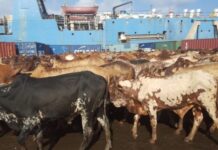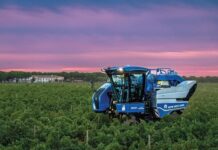New research released today by McKinsey & Company indicates that about 50 percent of the reduction in on-farm agricultural emissions required for a 1.5°C pathway are cost neutral or ROI-positive today. However, major barriers, namely transition financing, investment to reduce costs, behavior change, and additional incentives such as increased carbon prices are needed to support adoption.
The agricultural transition: Building a sustainable future report reveals that while many opportunities are viable today, incentives, likely in the form of carbon prices or other financing, may need to reach $150/ton to unlock many more. Moreover, barriers in carbon markets and financing remain for those that are viable. For example, only 1 percent of all carbon credits are issued through agriculture, and private investment in sustainable agricultural technology fell significantly last year. 50 percent of US farmers cite low ROI as a top reason for not participating in carbon programs.
The report finds that the cost of sustainable farming practices may need to fall considerably to spur widespread adoption, especially across smallholder farmers who supply 34 percent of the world’s food. McKinsey’s analysis reveals that many of the most effective decarbonization measures from feed additives to anaerobic digestors are also among the most expensive to implement at $99 and $311/ton of CO2e respectively. However, many highly effective measures, including direct rice seeding, n-inhibitors, and variable rate fertilization are ROI-positive today. The report says investment in training, additional transition financing, and supply chain traceability to enable green premiums could spur behavior change and adoption of the practices.
McKinsey pinpoints 28 measures with high potential to drive agricultural decarbonization. The analysis notes that investment in sustainable agriculture innovation has been inconsistent, with inflation-adjusted public investment falling in the US but rising in countries such as China and Brazil. Private investment in agricultural technology, including sustainable agriculture, also fell last year. And financial mechanisms to support sustainable farmers such as green product premiums and subsidies for low-carbon farming are still in their infancy.
McKinsey found that the conversion of land for agriculture, methane emissions from livestock and agricultural energy use cumulatively account for 74 percent of all agricultural emissions. Notably, action beyond the farm in the form of land use change, dietary shifts, and food loss and waste reductions will be required to meet the 1.5˚C pathway. For example, reducing food waste by just 23% could save 0.7 metric GT of CO₂e, shifting diets away from animal proteins could save nearly 640 million hectares of land, and nature-based land use such as forest restoration may abate 6.7 GT CO₂e by 2050.
Joshua Katz said: “Our analysis highlights 28 sustainable farming measures that could cumulatively save 2.2 GT CO2 a year and provide a clear pathway to 1.5˚C on the farm. Yet economics and behavior remain the key barriers to at-scale adoption of sustainable farming, particularly across developing countries and smallholder producers. Adoption may be significantly increased through novel transition financing incentives such as California’s FARMER program, green rebates or carbon markets, farmer training, and accelerated investment in R&D to cut the cost of existing solutions and develop new ones.”
To read McKinsey’s findings in detail, click here.








